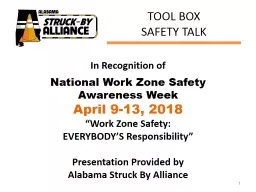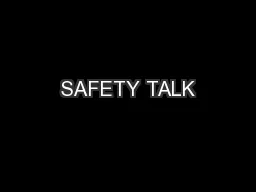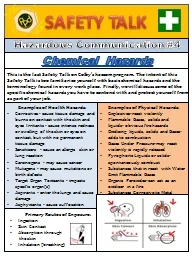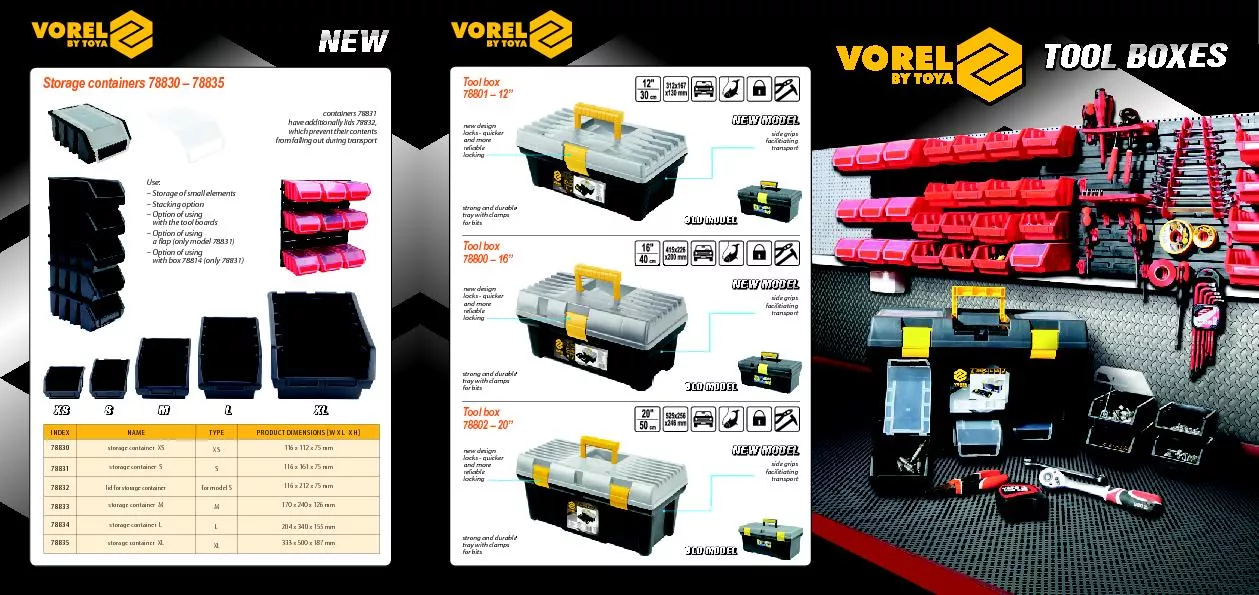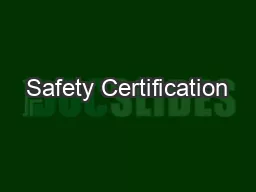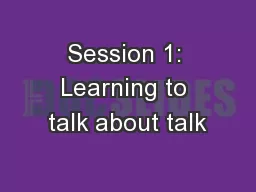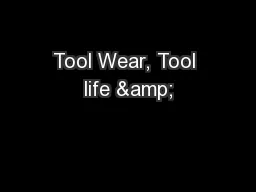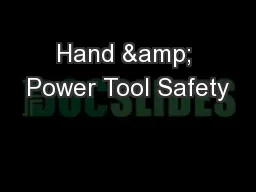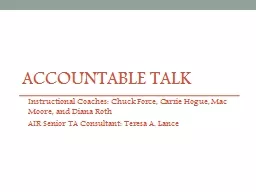PPT-TOOL BOX SAFETY TALK In Recognition of
Author : test | Published Date : 2018-11-09
National Work Zone Safety Awareness Week April 913 2018 Work Zone Safety EVERYBODYS Responsibility Presentation Provided by Alabama Struck By Alliance 1 3 2018
Presentation Embed Code
Download Presentation
Download Presentation The PPT/PDF document "TOOL BOX SAFETY TALK In Recognition of" is the property of its rightful owner. Permission is granted to download and print the materials on this website for personal, non-commercial use only, and to display it on your personal computer provided you do not modify the materials and that you retain all copyright notices contained in the materials. By downloading content from our website, you accept the terms of this agreement.
TOOL BOX SAFETY TALK In Recognition of: Transcript
Download Rules Of Document
"TOOL BOX SAFETY TALK In Recognition of"The content belongs to its owner. You may download and print it for personal use, without modification, and keep all copyright notices. By downloading, you agree to these terms.
Related Documents

